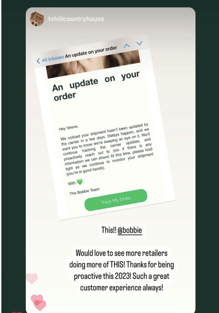The Retention Revolution: 4 Trends Shaking Up the Agency World

In the ever-changing world of digital marketing, one aspect has recently taken center stage: customer retention. Ever since iOS 14 sent shockwaves through the industry, businesses are realizing that keeping existing customers can and should be cheaper than acquiring new ones. Gone are the Golden Era Days of Facebook Ads where anyone could slap together a dropshipping store in a day, rip creative from another brand selling the same gadgets, press a couple buttons in Facebook, and run a profitable store. Ad costs are going up, inflation has been kicking our butt, consumers are becoming more savvy, and every day a new article comes out with the same title “When’s the Recession?!”
This change in the market has brought a new focus on the rise and evolution of retention agencies. Let’s explore four key trends we're seeing in the world of retention agencies.
Trend #1: A Shift in Focus Towards Retention
In the past, businesses primarily focused on customer acquisition. Talking about your CAC, how many new customers you acquired, and what your Shopify dashboard looked like was sexy. Today, growth is still an incredibly important lever. Without growth there is no retention, but now brands and agencies are focused on things like first order profitability, returning customer rate, Customer Acquisition Cost to LTV, and much more!
Along with the increased focus on retention, there's also a growing emphasis on the post-purchase process (as there should be). A major lever for retention is ensuring that a customers onboarding experience to a brand is in tip-top shape — giving them all the information they need to use your product effectively, along with easy access to customer service, returns, exchanges, etc.
Thanks to folks like Eli Weiss who are banging the CX drum every day on Twitter (X-Twitter?), brands are investing more in customer experience. These efforts aim to turn one-time buyers into repeat customers, and repeat customers into brand loyalists who will shout your brand’s name from the mountain tops.

Trend #2: The Rise of Sophisticated Retention Agencies
As the demand for retention strategies has grown, so has the sophistication (and number!) of the freelancers and agencies specializing in this area. This flooding of the market has raised the standard for what brands can expect. Go back just a couple years ago, and it felt like the agency x brand relationship was very transactionally focused on an output. “We the agency will give you X number of campaigns”, and that was that. Now the most successful agencies are still delivering on those campaigns, but at the same time they are diving into what the data behind that campaign is telling them. They’re letting this guide their strategy going forward, split-testing the most important levers, and getting even more ingrained into their client’s business.
Trend #3: The Tension Between Value-Add and Revenue-Focused Campaigns
Navigating the use of value-add and revenue-focused campaigns is a balancing act. While value-add campaigns aim to enhance the customer experience and build long-term loyalty, revenue-focused campaigns aim to drive immediate sales. Both have their place in a comprehensive marketing strategy, but finding the right mix can be tricky. The best agencies are working with their clients to understand the types of communications they want to have with their consumers and adding in their recommendations to ensure they’re driving revenue and retention. Thankfully, it feels like fewer brands are sending campaigns around whatever silly holiday is on the calendar and focused instead on a more intentional strategy.
Trend #4: Growth and Retention are Better Together
Peanut butter and jelly, brownies and ice cream, growth and retention — some things in life are better together, and the best agencies and freelancers know that. Agencies that operate in silos and view their channel as the most important piece are missing the whole point. I commonly see tweets from people about “not spending another dollar on your ads, and extract $$$ from your list instead!,” or to “stop raising your ad spend before you read this.” All of these sensationalized and ego-stroking comments are trying to pitch growth and retention against each other.
In 2022 and 2023, I’ve anecdotally heard more paid agencies looking to acquire retention agencies because they understand the impact that the channels can have when they prioritize synergy. This tracks with my own experience. I’m closing in on 2 years at Homestead, and prior to me joining, Homestead had an email service but it was very minimal, and it was really just to help amplify their efforts on paid social. I reached out to Zach Stuck, the Founder of Homestead, asking if he did consulting on running an agency and he had the vision to pitch me on why I should join Homestead and help lead the Email team.
The best agencies out there know these two channels need to move with complimentary priorities. Prioritizing growth at the expense of retention will lead to a list full of one-time-purchasers, and prioritizing retention over growth might not allow your business to experience the success it’s capable of! Instead of thinking in siloed compartments, think about how you can build your business in a way that brings in new customers efficiently and gets them to come back again and again. That’s growth and retention.
Looking for a little TL;DR?
- Brands and agencies are paying more attention to retention and CX, primarily through getting one-time customers to become repeat customers.
- Retention agencies are becoming more sophisticated and are providing better service.
- Agencies are wising-up and driving content that really engages with their customers to effectively drive revenue.
- Growth and Retention are better together. Without growth there’s nothing to retain, and without retention, you’re always at the mercy of ad platforms that will likely never get cheaper.
Jacob is the Director of Email Strategy at Homestead Studio, where he works with his team of strategists to efficiently drive revenue for their clients through their retention channels.


